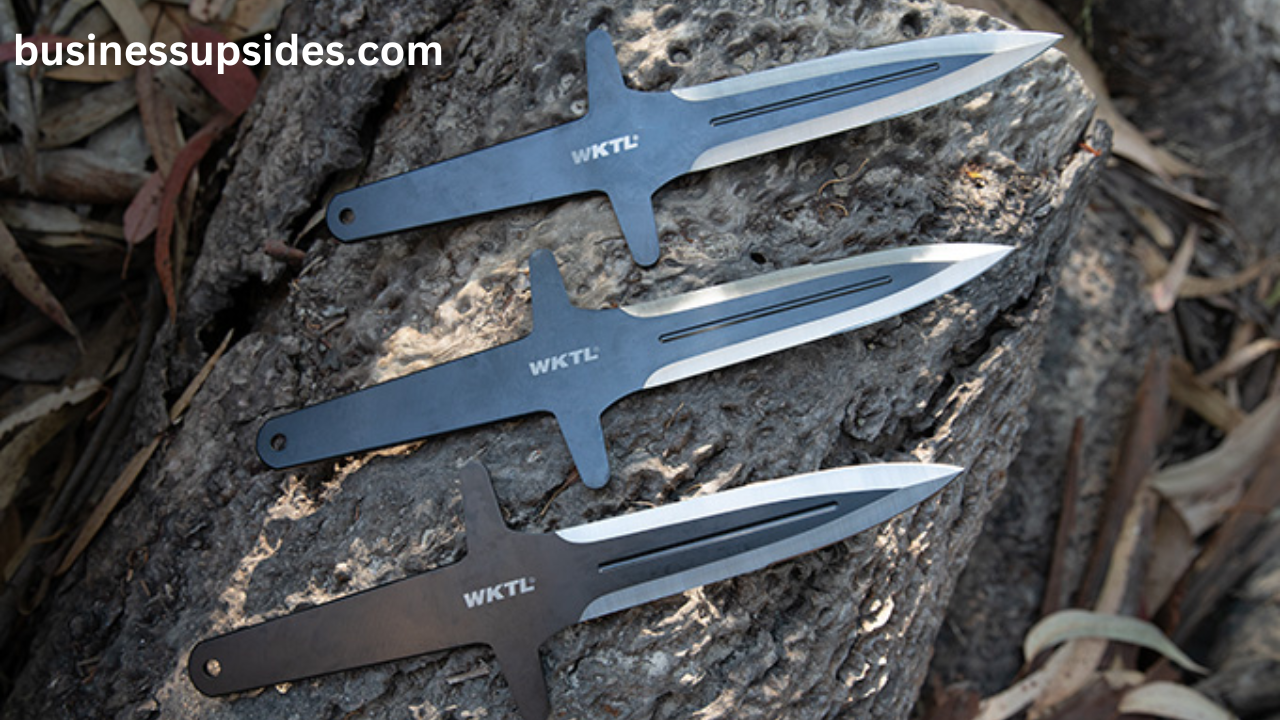Throwing Knives A Complete Guide to the Art and Sport
Throwing knives have been a part of human history for centuries, and their use has evolved over time from a practical skill to a sport. Whether as a tool for hunting, a weapon in combat, or a sport pursued for recreation, knives represent a fascinating and engaging activity. In this guide, we will delve into the history, design, techniques, safety measures, and modern-day sport of knives.
A Brief History of Throwing Knives
Knives are not just a modern invention but have roots dating back thousands of years. Early civilizations used knives as part of their weaponry, with records of their use in Asia, Europe, and the Americas. In the ancient world, people would throw knives and similar sharp implements for both hunting and combat.
For example, the Aztecs in Mesoamerica were known to use throwing weapons, including blades and spears, for both ceremonial and military purposes. Similarly, various tribes in Africa and Asia utilized knives in a throwing capacity, primarily as tools for hunting or fighting. Throwing knives were also popular in ancient China and Japan, where they were used by martial artists and soldiers.
In the 20th century, however, knife throwing shifted from a utilitarian skill to a competitive and recreational sport. The growth of the sport, particularly in the United States and Europe, coincided with the rise of circus and sideshow performances. It was during this time that knife throwing began to be showcased as an entertaining skill rather than a necessary military tactic.
The Design of Throwing Knives
The design of knives is one of the most important aspects of the sport. These knives are engineered to be aerodynamic and balanced, allowing them to spin accurately when thrown. There are several features of knives that make them different from regular knives:
1. Shape and Blade Style
Knives typically feature a simple, streamlined design that aids in their flight. Unlike hunting or utility knives, which are made for cutting and utility, knives are meant for distance and control. The blade is usually narrow, with a flat profile to reduce drag during flight. Some knives feature pointed or tanto-style tips, while others have more rounded blades. The point of the knife is essential because it ensures that the knife sticks to the target with maximum force.
2. Material
Throwing knives are generally made from strong, durable metals like stainless steel or carbon steel. Stainless steel offers excellent resistance to rust and corrosion, while carbon steel is known for its toughness and ability to hold an edge. These materials are chosen for their strength and ability to withstand the impact of repeated throws.
3. Weight and Balance
One of the key aspects of knives is their weight and balance. A well-balanced throwing knife allows for a controlled spin when thrown. If the knife is too light or too heavy, it may not fly as accurately. Most knives fall within the range of 100 to 300 grams (3.5 to 10.5 ounces). Some knives are handle-heavy, meaning the weight is concentrated in the handle, while others are blade-heavy for more controlled spins. In general, handle-heavy knives are easier to throw in a balanced way because the user can grip them more easily.
4. Handle Design
Throwing knife handles tend to be simple and unadorned. The material used for the handle can vary but is often made of wood, plastic, or metal. Some knives feature a hole at the end of the handle to aid in balance and grip. A good handle design ensures that the user has a secure grip during the throw, while also helping to balance the knife’s flight.
Techniques of Throwing Knives
Knives may seem simple at first, but there are various techniques that require skill and precision. These techniques can range from basic throws to advanced maneuvers, and each technique can be adjusted depending on the type of knife used and the thrower’s style. Below are some of the most common techniques:
1. One-Handed Throw
The one-handed throw is the most common technique used in throwing knives. It involves gripping the knife with one hand and releasing it with a flick of the wrist. This is the simplest throw and is often used by beginners. There are two main variations of this throw:
- Overhand throw: In this technique, the knife is thrown with an overhand motion, similar to throwing a ball. The wrist flick ensures that the knife spins properly.
- Underhand throw: This technique involves a reverse motion where the knife is thrown with an underhand motion. The knife typically spins less, but the throw can be more controlled and effective.
Previous article; Heated Hoodies The Ultimate Winter Companion
2. Two-Handed Throw
A two-handed throw is often used for greater power and accuracy. In this technique, both hands are used to launch the knife, similar to how you would throw a spear. This throw is generally used in longer-distance knife throwing and can be a bit harder to master than the one-handed throw. The user must ensure they maintain a steady grip on the knife and throw it with controlled force to keep the spin accurate.
3. No-Spin Throw
The no-spin throw is a specialized technique where the knife is thrown with minimal rotation. The goal is to strike the target with the flat side of the blade rather than the tip. This throw requires a unique grip and more precise body positioning, making it one of the most difficult throwing techniques to master. It’s often used in competitions and by more advanced throwers who want to test their control over the knife.
4. Advanced Techniques
Experienced knife throwers will develop their own unique throwing techniques, often combining elements of the basic throws with specific body movements and throws tailored to particular target distances. Some advanced techniques include the sidearm throw, where the knife is released from the side, and the jump throw, where the thrower leaps before releasing the knife for added force.
Safety Measures in throwing knives
As with any sport involving sharp objects, safety is an essential aspect of knife throwing. Proper precautions should always be taken to prevent injury. Here are some key safety measures to keep in mind:
1. Target Setup
Ensure that the target is made from softwood, like pine, to reduce the risk of the knife ricocheting off the surface. The target should be securely mounted in a safe location, away from bystanders and fragile objects.
2. Protective Gear
Though knife throwing does not require a lot of gear, some protection is essential. Wear thick gloves to protect your hands from the edges of the knives. Consider wearing safety goggles or glasses to protect your eyes in case a knife bounces back unexpectedly.
3. Practice in a Controlled Environment
Always practice in a controlled environment, such as a backyard with proper safety fencing or a designated throwing range. Avoid throwing knives in crowded areas or spaces where you don’t have clear control over the target.
4. Never Throw at People
Knife throwing is a skill and a sport, not a way to settle disputes. Never throw knives at people, even if they are in a controlled environment or are willing participants. Knife throwing should always be done in a safe, designated area where the thrower has full control.
5. Proper Handling and Maintenance
Ensure knives are well-maintained and sharp. Dull knives are more likely to bounce off targets or cause accidents due to improper sticking. Additionally, always ensure that knives are properly handled when being transported or stored to prevent accidents.
Knife Throwing as a Sport
Knives as a competitive sport has grown steadily, with competitions held worldwide. Knife throwing competitions test a thrower’s accuracy, speed, and technique across various distances and target setups. Some of the most popular types of competitive events include:
1. Distance Competitions throwing knives
In distance competitions, the thrower is tasked with hitting a target at a far distance, typically ranging from 10 to 30 feet (3 to 9 meters). Accuracy and consistency are key, and the competition may involve multiple rounds, with the best throwers moving on to the next stage.
2. Target-Based Competitions
In target-based competitions, throwers aim to hit a specific area on the target, often scoring points based on where the knife sticks. These competitions can have different rules depending on the level, from amateur events to world championships. Some competitions even feature moving targets for added challenge.
3. Freestyle Competitions
In freestyle events, throwers are often asked to perform specific tricks or throws, such as throwing with their non-dominant hand, throwing multiple knives simultaneously, or hitting moving targets. These events test a thrower’s creativity and skill, offering more dynamic and visually impressive performances
Conclusion
Throwing knives is a fascinating and challenging sport that requires precision, skill, and control. Whether for recreation, competition, or self-defense, knives have captivated enthusiasts for centuries. The design of the knives, the techniques involved, and the safety measures taken ensure that the sport remains exciting and accessible to people of all skill levels. By understanding the history, design, techniques, and safety considerations involved in knives, you can begin to explore and enjoy this unique and rewarding sport.











Post Comment